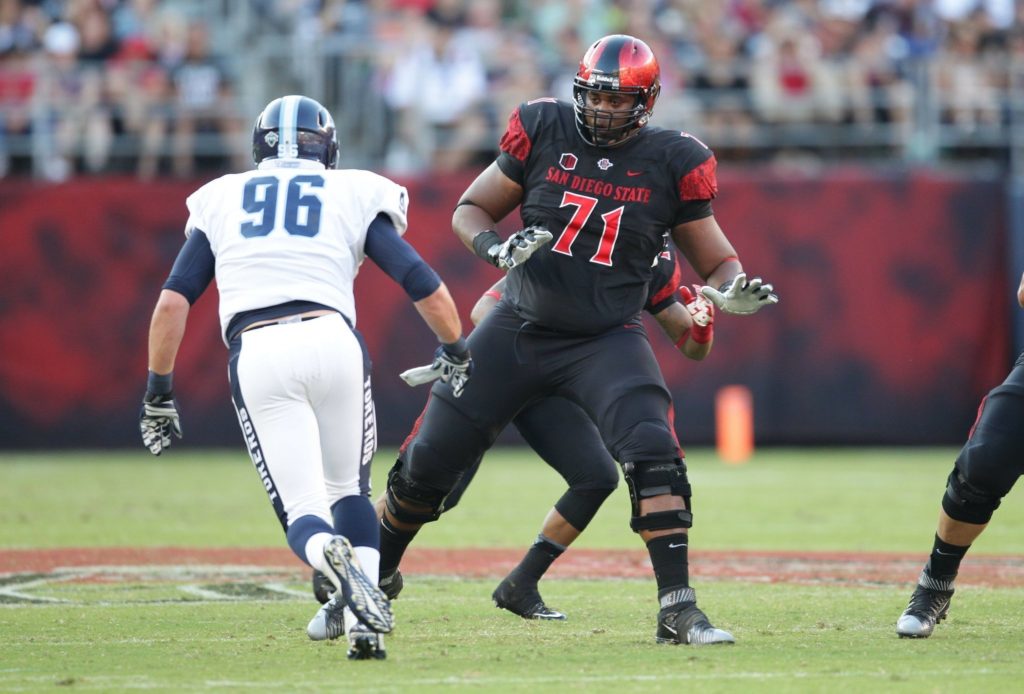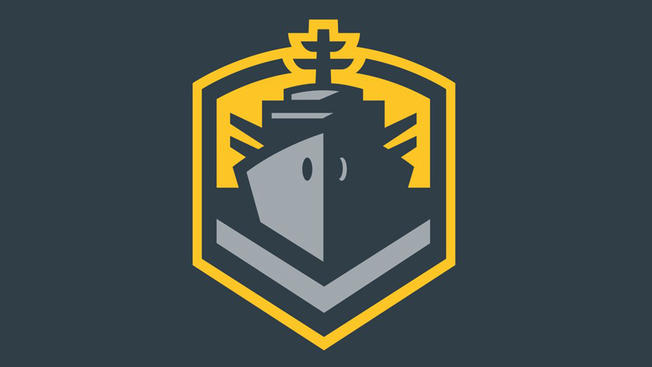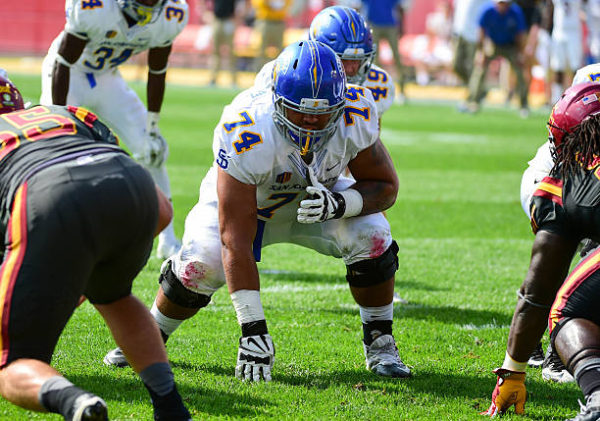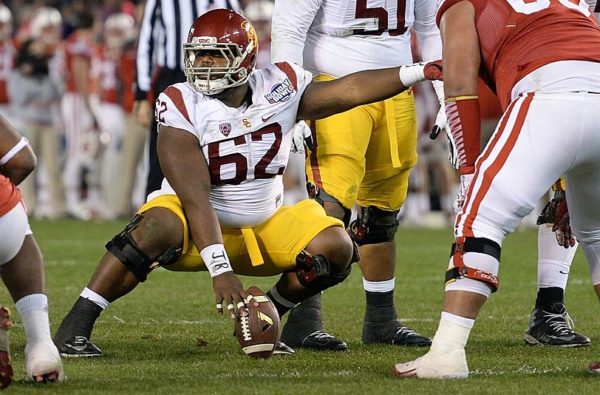San Diego Fleet Roster Breakdown: Center and Guard

Credit: AP Photo

Chris Gonzalez is another one of those Mountain West products with some interesting upside on this Fleet roster. Spending his entire collegiate career with San Jose State, Gonzalez started 36 games with the Spartans and was the only offensive player to start all 13 games.
Gonzalez possesses good size for a guard, standing at 6’3″ and 310 pounds, and his San Jose State offenses never averaged less than 120 rushing yards per game with Gonzalez leading the way. He is primarily a run blocker and does a fairly good job at creating lanes for people to run through.
While there is little to no film on Gonzalez, the only negative I saw with him was that he struggled to move laterally. He is not necessarily a good athlete and relies on his strength to block rather than his technique and footwork. This might work in the AAF, as he may just have the pure strength to bully his opponents, but if Gonzalez wants to earn a spot on an NFL team, he will need to make these minor adjustments. Gonzalez will compete for a roster spot during minicamp, but at an extremely deep and talented position, I would not be surprised if he came up just short.
Will Pericak is about as raw as you can be when it comes to being an offensive lineman. Pericak is the only player that is listed as an offensive lineman on this team that was not an offensive lineman in college. Instead, he started every single game of his collegiate career (49) as a defensive lineman for the Colorado Buffaloes.
Despite a pretty solid four-year tenure at Colorado, Pericak would not be drafted in the 2013 NFL draft and had to sign with the Baltimore Ravens as an undrafted free agent. The conversion to the offensive line came when he was signed to the Seattle Seahawks practice squad, as the team believed he had the intangibles and athleticism to be an offensive lineman in the NFL. Unfortunately for Pericak, he was never given an opportunity by the Seahawks to prove himself and was released after spending three years with the team.
There is no real footage on Pericak playing any offensive line position, making it pretty difficult to draw a conclusion as to what he can be for the Fleet. He’s transformed his body to fit the mold of an offensive lineman, as coming out of college he was roughly 280 pounds and he now weighs around 300. He has the height to play guard, standing at 6’4″, and has shown he is a good enough athlete simply because of how he transitioned from defense to offense so smoothly.
Clearly, the biggest knock on Pericak is going to be the fact that he has never actually played a meaningful down as an offensive lineman. However, the AAF is a developmental league and this is the perfect league for him to get some reps in and potentially prove that he is a capable offensive lineman. Unfortunately, with the talent on the Fleet’s offensive line, I find it really hard to believe that Mike Martz would take a flier on a raw product like Pericak over a more established player like Chris Gonzalez or Darrel Greene. Hopefully for Pericak, however, he is able to find a spot on another roster and succeed at his new position.
Khaliel Rodgers is an intriguing option for the Fleet because, despite being listed as a guard on their roster, he has a lot of experience playing center as well. As of right now, the Fleet’s official roster only lists one center and that is obviously not enough depth at a position with a high injury risk. Rodgers started 11 games for USC in 2014 and 2015, seven of which came as a center and four as an offensive guard. Going into his junior season, USC decided to transition him into a defensive lineman, where he would operate primarily as a backup.

After graduating from USC, Rodgers decided to exercise his last season of eligibility and play as a graduate transfer at UNC. Once arriving at UNC, however, he was forced to retire due to some family problems that he needed to attend to. A few weeks later, Rodgers decided that he wanted to return to the game of football and the Tar Heels welcomed him with open arms. Rodgers would start 11 games for the Tar Heels, all of which came at offensive guard.
Rodgers was rather dominant for the Tar Heels and proved that he was solid in both run blocking and pass protection. He put up 29 reps on the bench press at his pro day, showing that he has some strength despite the fact that he will need to improve in that regard. His 6’3″, 315-pound frame gives him good size for both the guard and center position. Rodgers, in my opinion, is better than the other center listed on this roster and is the only other player with real experience as a center. He should be the favorite to snap the ball to Josh Johnson come opening day, and also a lock to make this roster.
The final player on this breakdown is center, Matt Cohen. Cohen is the only player listed as a center on this roster despite the fact that he only played center and guard in college. He attended Lehigh before transferring to Louisville for his senior season, where he was never given the opportunity to start by the Cardinals.
Cohen has a phenomenal size for a center, standing at 6’6″ and 305 pounds. This is primarily because he operated as a tackle in college, but assuming the Fleet intend to use him as a center, Cohen already has an advantage just because of how big he is. During his time at Lehigh, Cohen was a part of a fairly balanced offense that showcased his abilities as both a solid run blocker and pass protector.

The knock on Cohen is this: he is listed as a center but has no experience actually playing the position. His listing as a center means that the Fleet intend to use him there and that, to me, is a concern. The center position is one of the most important in positions in football, as a bad snap or an inability to protect the quarterback up the middle is just asking for a disaster to happen. Cohen’s only chance of making the roster is if he proves that he can handle this position change well in minicamp, and if they bring in an actual center, it is likely that he is left off simply because Khaliel Rodgers is better than him.
Predicting an offensive line is so incredibly difficult because anything can happen and these players are all at such a high risk of injury. An NFL team would typically keep somewhere in the range of eight to nine offensive lineman and I would expect the Fleet to do so as well.
Without previewing the tackles yet, I would assume that both Rodgers and Cohen make the team as the two centers. Unless the Fleet brings in another center, Cohen makes the team simply because he is the only listed center although Rodgers should be the favorite to start. Nunn, Gonzalez, Greene, and Mama all make this roster, in my opinion, leaving two more open spots for two more tackles or anyone else the team chooses to bring in.
Nunn should make this roster easily and should get an opportunity to play the tackle position. Nunn has an impressive track record as an offensive tackle and maybe the best offensive tackle on this roster, despite being listed as a guard. If he does not play offensive tackle and the team elects to use him as a guard, Nunn could operate as a backup tackle if one of the starters is to go down. The thought process behind this is, by using Nunn as a backup tackle Greene and Mama are able to make the roster and improve this offensive line overall.
So, as of right now, I have Rodgers, Cohen, Nunn, Greene, and Mama making this roster with three more offensive linemen joining them, for a total of eight offensive linemen on the Fleet.
Diego works at Prep Baseball Report as an Area Scout in Illinois and Missouri. He graduated this spring with a Bachelor Degree in Communications and played four years of college baseball, logging nearly 50 innings of work in a relief role. Diego hopes to work in an MLB front office one day and has been a Padres fan since he was six years old.